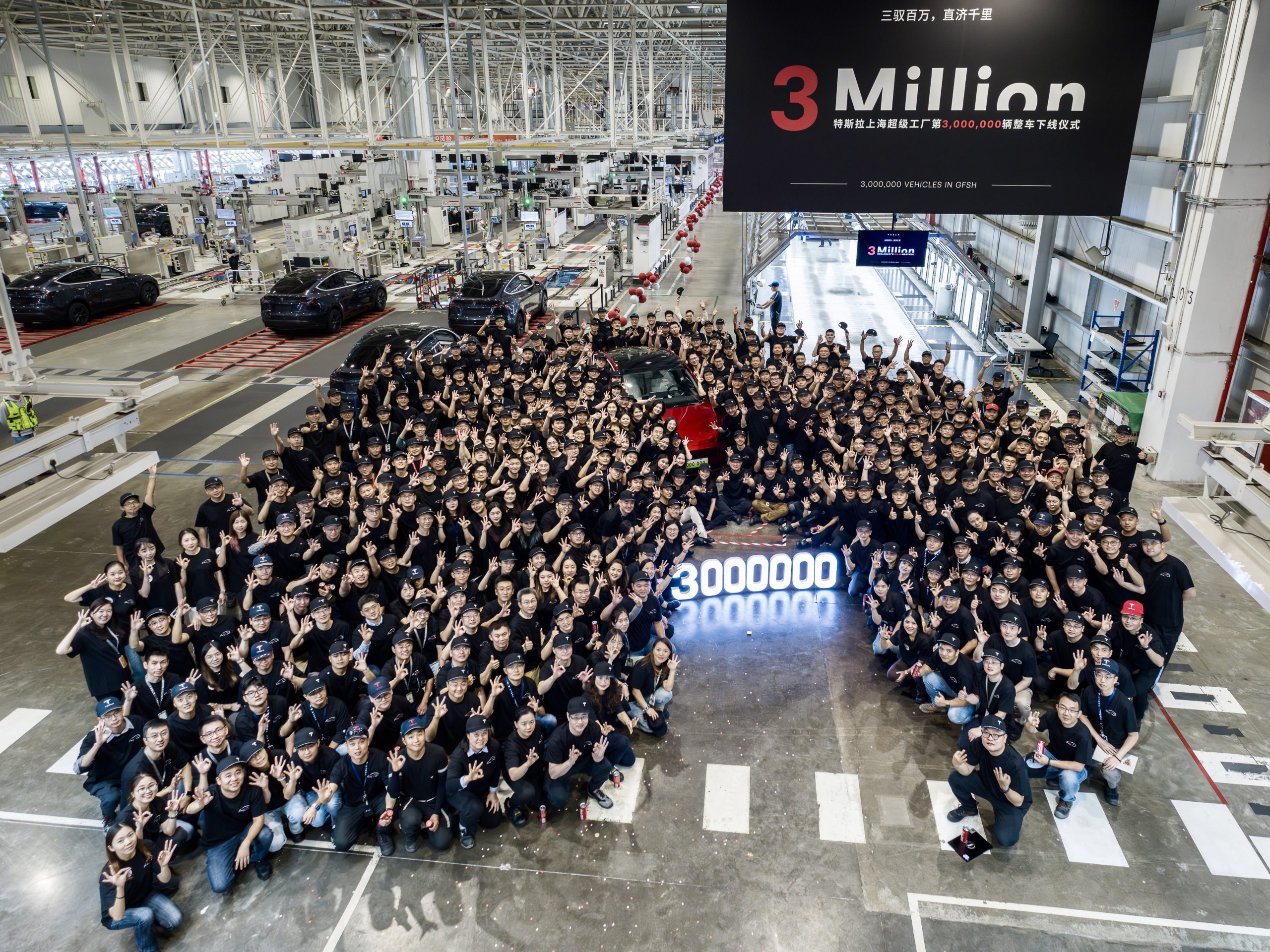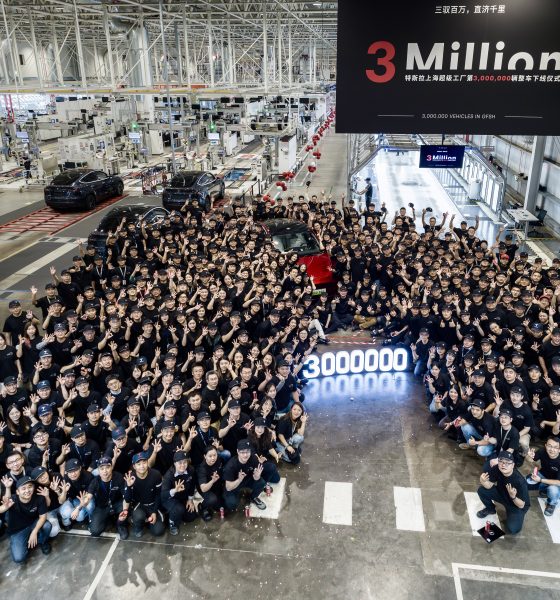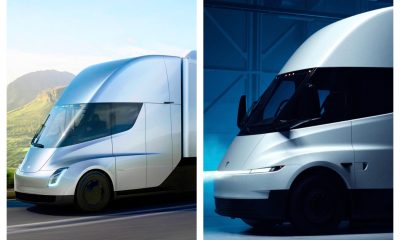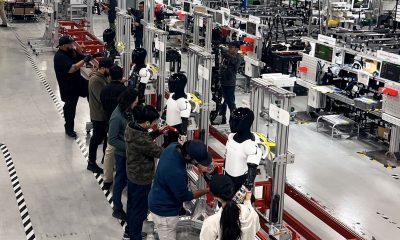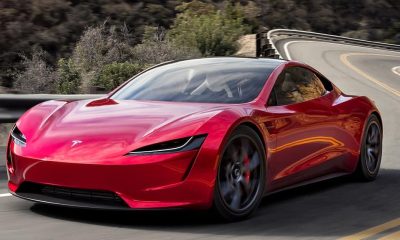Tesla China has announced that it has produced its 3 millionth vehicle. The electric vehicle maker celebrated the occasion with a commemorative photo showcasing the facility’s 3 millionth car, a red Model Y, and the Tesla Gigafactory Shanghai team.
As highlighted by Tesla Vice President Grace Tao in a post on Chinese social media platform Weibo, Giga Shanghai achieved its 3 million vehicle production milestone on the same day as Tesla’s “We, Robot” event in the United States. She also highlighted that it took Giga Shanghai 32 months to produce its first millionth vehicles but it only took 13 months to go from 2 to 3 million cars produced.
Giga Shanghai achieves 3 million production milestone ? pic.twitter.com/Eauqqs3bJC— Tesla Asia (@Tesla_Asia) October 11, 2024
“Today we released the Robotaxi driverless taxi, and here is another good news to share with you: Today, the Shanghai Super Factory ushered in a new milestone – the 3 millionth vehicle rolled off the production line. It took Tesla Shanghai Super Factory 32 months to go from 0 to 1 million vehicles; it took only 13 months to go from 2 million to 3 million vehicles. Each car is a small step, and 3 million is a big leap,” the Tesla executive wrote in her post on Weibo.
Tesla’s official Weibo account also highlighted a number of milestones that have been achieved by Giga Shanghai. As per the electric vehicle maker, three million vehicles have been produced by Gigafactory Shanghai in less than five years, making it Tesla’s most efficient factory. It is also Tesla’s primary vehicle export hub, having exported 1 million vehicles as of late September 2024 to Europe, Asia, and in countries such as Australia and New Zealand.
It’s an honor to work with such a talented and hardworking team! Giga Shang team, you guys rock! https://t.co/5Y0M9WhQ3J— LaoZhu (@tomzhu_nz) October 11, 2024
What is quite amazing about Giga Shanghai is the fact that it is just a really well-optimized facility. If one were to consider the fact that customer deliveries of Model 3 sedans didn’t really start until January 2020 and Model Y deliveries did not start until January 2021, the volume of cars that have been produced by Giga Shanghai becomes nothing short of amazing. This is due to a number of factors, such as great leadership from executives such as Tom Zhu and the facility’s 95% automation rate, to name a few.
Don’t hesitate to contact us with news tips. Just send a message to simon@teslarati.com to give us a heads up.
News
Tesla Semi undergoes major redesign as dedicated factory preps for deliveries
The Semi has been one of the most anticipated products in the Tesla lineup due to the disruption it could cause in the trucking industry.

Tesla put its all-electric Semi truck through quite a major redesign as its dedicated factory for the vehicle is preparing for initial deliveries to the public starting next year.
The Semi has been one of the most anticipated products in the Tesla lineup due to the disruption it could cause in the trucking industry.
It has already been in numerous pilot programs for some pretty large companies over the past couple of years, PepsiCo. being one of them, and it is moving toward first deliveries to other companies sometime in 2026.
Yesterday at the 2025 Annual Shareholder Meeting, Tesla unveiled its new Semi design, which underwent a pretty significant facelift to match the aesthetic and vibe of the other vehicles in the company’s lineup.
Additionally, Tesla announced some other improvements, including changes to efficiency, and some other changes that we did not get details on yet.
The first change was to the design of the Semi, as Tesla adopted its blade-like light bar for the Class 8 truck, similar to the one that is used on the new Model Y and the Cybertruck:

There also appear to be a handful of design changes that help with aerodynamics, as its efficiency has increased to 1.7 kWh per mile.
Tesla also said it has an increased payload capability, which will help companies to haul more goods per trip.
All of these changes come as the company’s Semi Factory, which is located on the same property as its Gigafactory in Reno, Nevada, is just finishing up. In late October, it was shown that the Semi facility is nearly complete, based on recent drone imagery from factory observer HinrichsZane on X:
The factory will be capable of producing about 50,000 Tesla Semi units annually when it is completely ramped. The company has major plans to help get the Semi in more fleets across the United States.
Other entities are also working to develop a charging corridor for electric Class 8 trucks. The State of California was awarded $102 million to develop a charging corridor that spans from Washington to Southern California.
Another corridor is being developed that spans from Southern California to Texas, and 49 applicants won $636 million from the Department of Transportation for it.
Tesla requested funding for it, but was denied.
The Semi has been a staple in several companies’ fleets over the past few years, most notably that of Frito-Lay and PepsiCo., who have reported positive experiences thus far.
Musk said last year that the Semi had “ridiculous demand.”
News
Tesla Cybercab production starts Q2 2026, Elon Musk confirms
Elon Musk highlighted that the fully autonomous vehicle will be the first Tesla designed specifically for unsupervised self-driving.

Tesla CEO Elon Musk confirmed that production of the company’s autonomous Cybercab will begin in April 2026, and its production targets will be quite ambitious.
Speaking at Tesla’s 2025 Annual Shareholder Meeting, Musk highlighted that the fully autonomous vehicle will be the first Tesla designed specifically for unsupervised self-driving.
A robotaxi built for an autonomous world
Musk described the Cybercab as a clean-slate design optimized for autonomy, with no steering wheel, pedals, or side mirrors. “It’s very much optimized for the lowest cost per mile in an autonomous mode,” Musk said, adding that every Tesla produced in recent years already carries the hardware needed for full self-driving.
The Cybercab will be assembled at Giga Texas and will serve as the company’s flagship entry into the commercial robotaxi market. Musk emphasized that the project represents Tesla’s next evolutionary step in combining vehicle manufacturing, artificial intelligence, and mobility services.
One Cybercab every ten seconds
Musk reiterated that the Cybercab’s production process is more closely modeled on consumer electronics assembly than on traditional automotive manufacturing. This should pave the way for outputs that far exceed conventional automotive products.
“That production is happening right here in this factory, and we’ll be starting production in April next year. The manufacturing system is unlike any other car. The manufacturing system of the Cybercab, it’s closer to a high volume consumer electronics device than it is a car manufacturing line. So the net result is that I think we should be able to achieve, I think, ultimately, less than a 10-second cycle time, basically a unit every 10 seconds.
“What that would mean is you could get on a line that would normally produce, say, 500,000 cars a year at a one minute cycle time, Model Y. This would be maybe as much as 2 million or 3 million, maybe ultimately it’s theoretically possible to achieve a 5 million unit production line if you can get to the 5-second cycle time,” the CEO said.
News
Tesla China expecting full FSD approval in Q1 2026: Elon Musk
The CEO shared the update during Tesla’s Annual Shareholder Meeting.
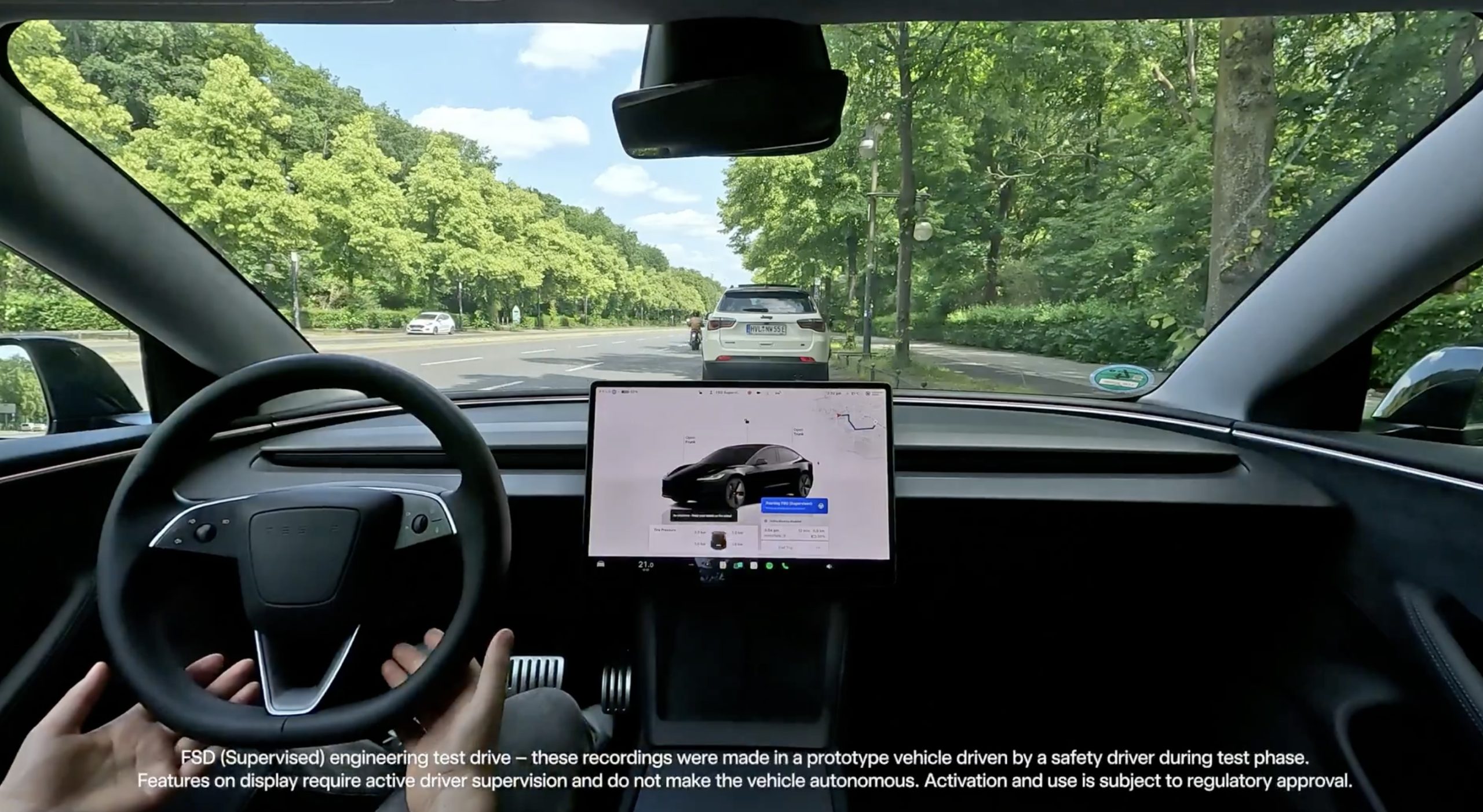
Elon Musk has provided a concrete estimated date for Full Self-Driving’s (FSD) full approval in China. While a version of the system has been deployed to some users in China, the company only holds partial approval for FSD features in the country.
The CEO shared the update during Tesla’s Annual Shareholder Meeting, where stockholders also voted to approve Elon Musk’s ambitious 2025 performance award.
Elon Musk’s China FSD update
During the meeting, Elon Musk stated that Tesla expects to secure full regulatory approval for its Full Self-Driving (FSD) system in China by February or March 2026. This would mark a potential breakthrough in one of the world’s most competitive EV markets.
“We have partial approval in China, and we hopefully will have full approval in China around February or March or so. That’s what they’ve told us,” Musk said.
Tesla’s rollout of FSD features in China began in February 2025 under update 2024.45.32.12, which introduced what the company locally called “Autopilot automatic assisted driving on urban roads.” While not officially branded as FSD, the feature mirrored Tesla’s inner-city capabilities.
Positive feedback from China
Feedback from local drivers suggests strong real-world performance for the company’s “Autopilot automatic assisted driving on urban roads” feature. One driver who used the system for two months described it as “well-calibrated and human-like,” adding that it “slows appropriately on narrow streets and picks up speed on major roads.” The Tesla owner further reported zero safety interventions over his testing period, calling the system “almost too polite” when encountering pedestrians and scooters.
A Tesla Model 3 driver was also able to drive to the base camp of Mount Everest from Henan Province, a journey of about 4,000 kilometers (2,485 miles), using “Autopilot automatic assisted driving on urban roads.” The driver’s trip was livestreamed on Chinese social media, where it attracted a lot of interest from viewers.
-

 News1 week ago
News1 week agoTesla Cybercab spotted testing on public roads for the first time
-

 Elon Musk6 days ago
Elon Musk6 days agoNeuralink’s first patient could receive an upgrade: Elon Musk
-
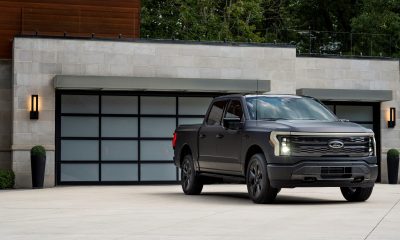
 News9 hours ago
News9 hours agoFord reportedly considers cancelling F-150 Lightning: ‘The demand is just not there’
-
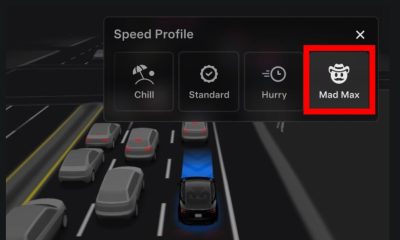
 News2 weeks ago
News2 weeks agoTesla ‘Mad Max’ gets its first bit of regulatory attention
-
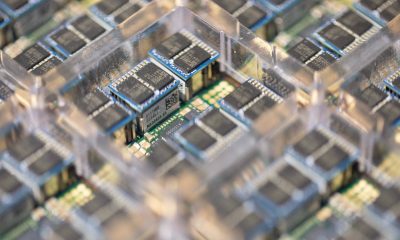
 Elon Musk4 days ago
Elon Musk4 days agoElon Musk subtly confirms one of Tesla AI8’s uses, and it’s literally out of this world
-
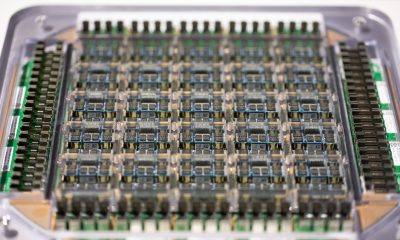
 News2 weeks ago
News2 weeks agoTesla shares AI5 chip’s ambitious production roadmap details
-
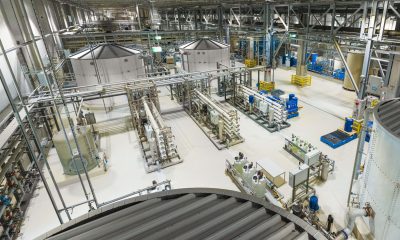
 News2 days ago
News2 days agoTesla Giga Berlin hits a sustainability milestone that’s so impressive, it sounds fake
-

 News1 week ago
News1 week agoNeuralink’s first human patient reflects on 21 months with brain implant “Eve”

